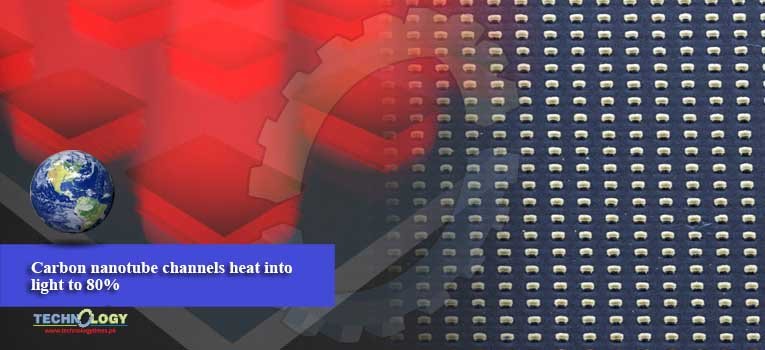A new device designed that could boost the average efficiency of a commercial solar panel to a whopping 80 percent based on an array of single-wall carbon nanotubes, which recapture the thermal photons of infrared radiation.

The device emits that energy as light in a different wavelength, which in turn can be recycled into electricity. Infrared radiation is the part of sunlight that carries warmth. It’s invisible to the naked human eye, but is on the same electromagnetic spectrum as light and radio waves, and X-rays.
It’s emitted by your stove, or a campfire, or even by your warm cat, purring on your lap. Basically, anything that emits heat is emitting infrared radiation.
In the proof-of-concept device the team developed, the carbon nanotube film can withstand temperatures up to 700 degrees Celsius (1,292 Fahrenheit), although the material is capable of withstanding a much higher heat, up to 1,600 degrees Celsius (1,292 Fahrenheit).
The engineering team then subjected their device to a heat source to confirm the narrow-band output. Each one of the resonator cavities in the film reduced the band of the thermal photons, producing light.
The next step in the research will be to collect this light using photovoltaic solar cells and converting it to electricity to confirm efficiency predictions.
“By squeezing all the wasted thermal energy into a small spectral region, we can turn it into electricity very efficiently,” Naik said.